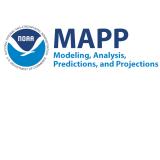Regional Influences of Vegetation on Complex Droughts in North America

Extreme droughts diminish freshwater availability, with significant consequences for the wellbeing of people and ecosystems. Surface vegetation is central to drought because of its large influence on water and energy fluxes at the land-atmosphere boundary and, therefore, on soil moisture and streamflow. However, the extent to which vegetation and droughts jointly shape each other is not fully known, including how vegetation specifically shapes regional drought characteristics, and how vegetation-drought interactions evolve with increasing CO2 and climate change. The mechanisms by which vegetation and drought are coupled and how that coupling interacts with changes in climate and CO2 to alter future droughts must therefore be understood to best inform risk management decisions in drought-prone regions.
This project will focus on trace vegetation-drought feedbacks and how these complex interactions shaped previous drought characteristics and influenced their predictability. It will also quantify what role, if any, vegetation played in the onset, evolution, and termination of historical severe seasonal-to-interannual droughts. This will be tested with observations and models for historical extreme droughts, such as the recent California (2011–2015), Texas (2010–2011), and Great Plains–Midwest (2011–2012) droughts.
This project will also use the latest generation of coupled Earth System Models from CMIP6, along with insights gleaned from historical analysis, to characterize the influence of vegetation-drought interactions on future North American drought risks.
This project is part of the NOAA Modeling, Analysis, Predictions, and Projections (MAPP)/NIDIS supported Drought Task Force IV.
For more information, please contact Molly Woloszyn (molly.woloszyn@noaa.gov).
Research Snapshot
What to expect from this research
- Peer-reviewed publications describing study results, as well as presentations to the scientific community. Current publications include:
- Gottlieb, A. R., and J. S. Mankin. 2025. "Subseasonal Temperature Variability Drives Nonlinear Snow Loss With Warming." Water Resources Research, 61, e2024WR039724.
- Li, Z., J. E. Smerdon, R. Seager, N. Siegert, and J. S. Mankin. 2024. "Emergent Trends Complicate the Interpretation of the United States Drought Monitor (USDM)." AGU Advances 5 (2), April 25, 2024.
- Gottlieb, A. R., and J. S. Mankin. 2024. "Evidence of human influence on Northern Hemisphere snow loss." Nature 625, 293–300.
- Gottlieb, A. R., and J. S. Mankin. 2022. "Observing, Measuring, and Assessing the Consequences of Snow Drought." Bulletin of the American Meteorological Society 103 (4), April 2022.
- Assess the role of vegetation in complex North American droughts using observations and CMIP6 models, as well as identify the real-world role of vegetation in historical complex droughts and the systematic model biases in droughts arising from vegetation. This could improve our estimates of drought risks over the coming decades and enable drought stakeholders to mitigate such risks.



